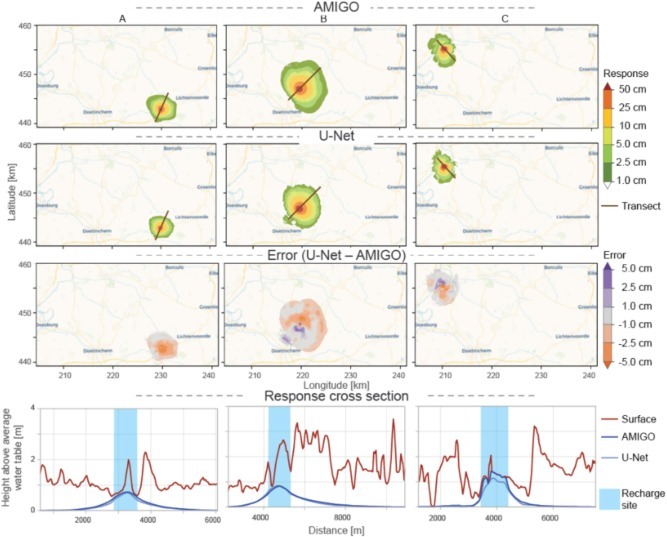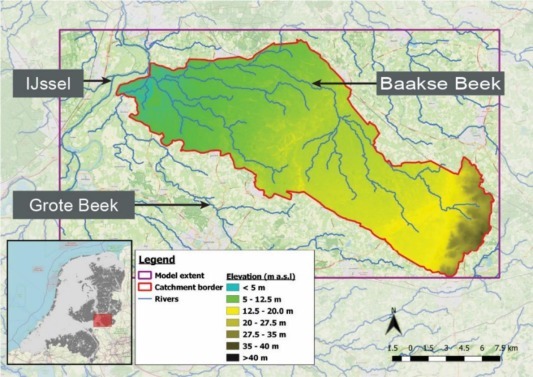Groundwater models are a valuable tool in optimising the decisions influencing groundwater flow. Spatially distributed models represent the groundwater level in the entire area from where essential information can be extracted, directly aiding in the decision-making process. However, these models are time-consuming, limiting the number of scenarios that can be considered. This study explores different machine learning (ML) models as faster alternatives to predict the increase in steady-state groundwater head due to artificial recharge in the unconfined aquifer while considering a wider spatial extent (832 columns x 1472 rows totalling 765 km2) than previous ML groundwater models. We trained three ML models (encoder-decoder, U-Net, and attention U-Net) with various hypothetical artificial recharge sites (100, 300, 500, and 1000 sites) in the Baakse Beek catchment (the Netherlands), using a detailed numerical groundwater model, AMIGO. The applied recharge rate along with geo-hydrological properties from the AMIGO baseline run were used as inputs to the ML models. The properties’ permutation importance indicated that all properties of the first aquifer were important to predicting the response and were included when training the ML models. All three ML models improved with additional training sites but showed limited benefits from more than 500 recharge sites. Of the three ML models, U-Net and Attention U-Net outperformed the encoder-decoder. These two models achieved Nash-Sutcliffe efficiency (NSE) of more than 0.8 when trained with 300 or more recharge sites. U-Net trained on 1000 recharge sites had the highest overall NSE of 0.95. U-Net better captures input features with highly variable spatial characteristics, such as rivers and drains which influence the maximum height of the groundwater response. The model captured the influence of the input features on the response, reproducing the response patterns across the entire catchment. Finally, we showed that the trained ML models are faster than the numerical model, predicting within 0.24 s (97th percentile), making it ideal for optimising decisions. Read more here: https://www.sciencedirect.com/science/article/pii/S0022169424008138




